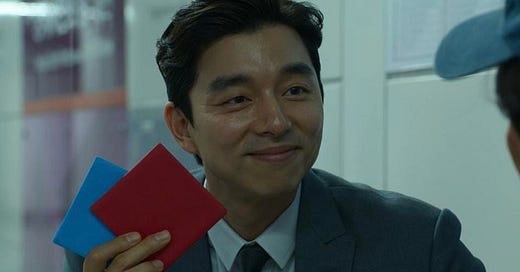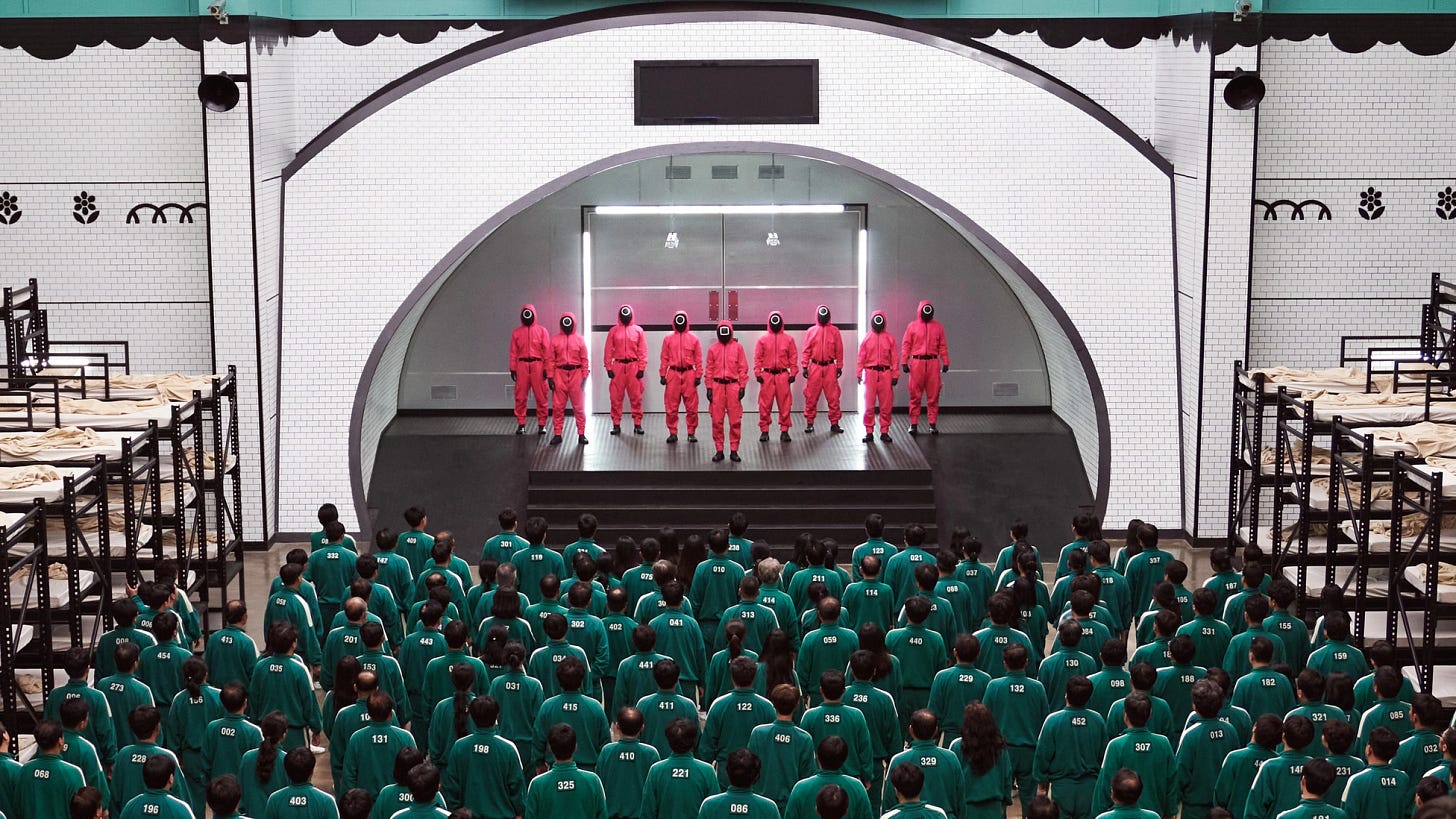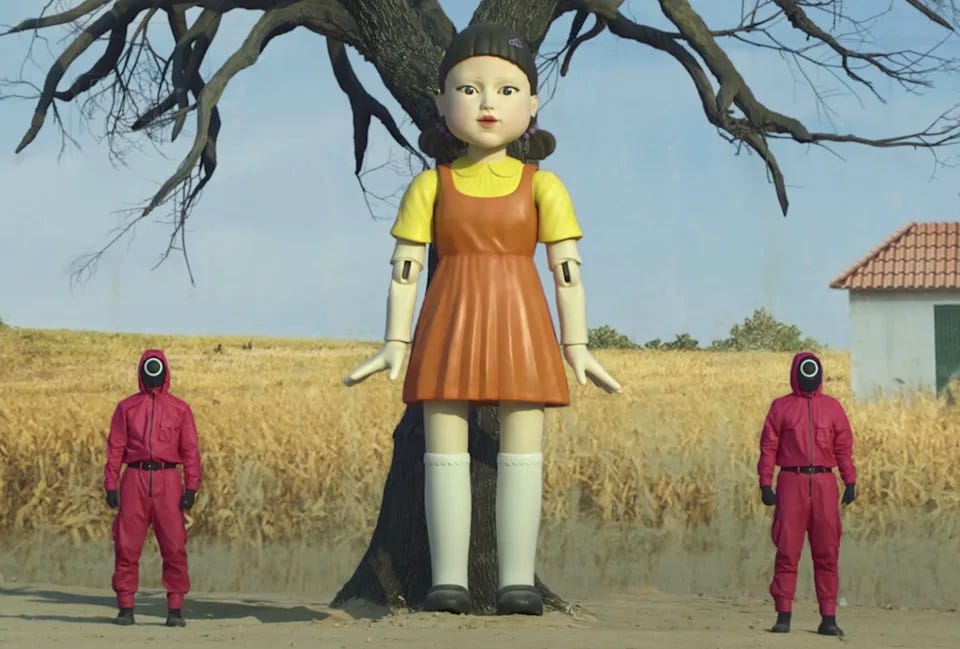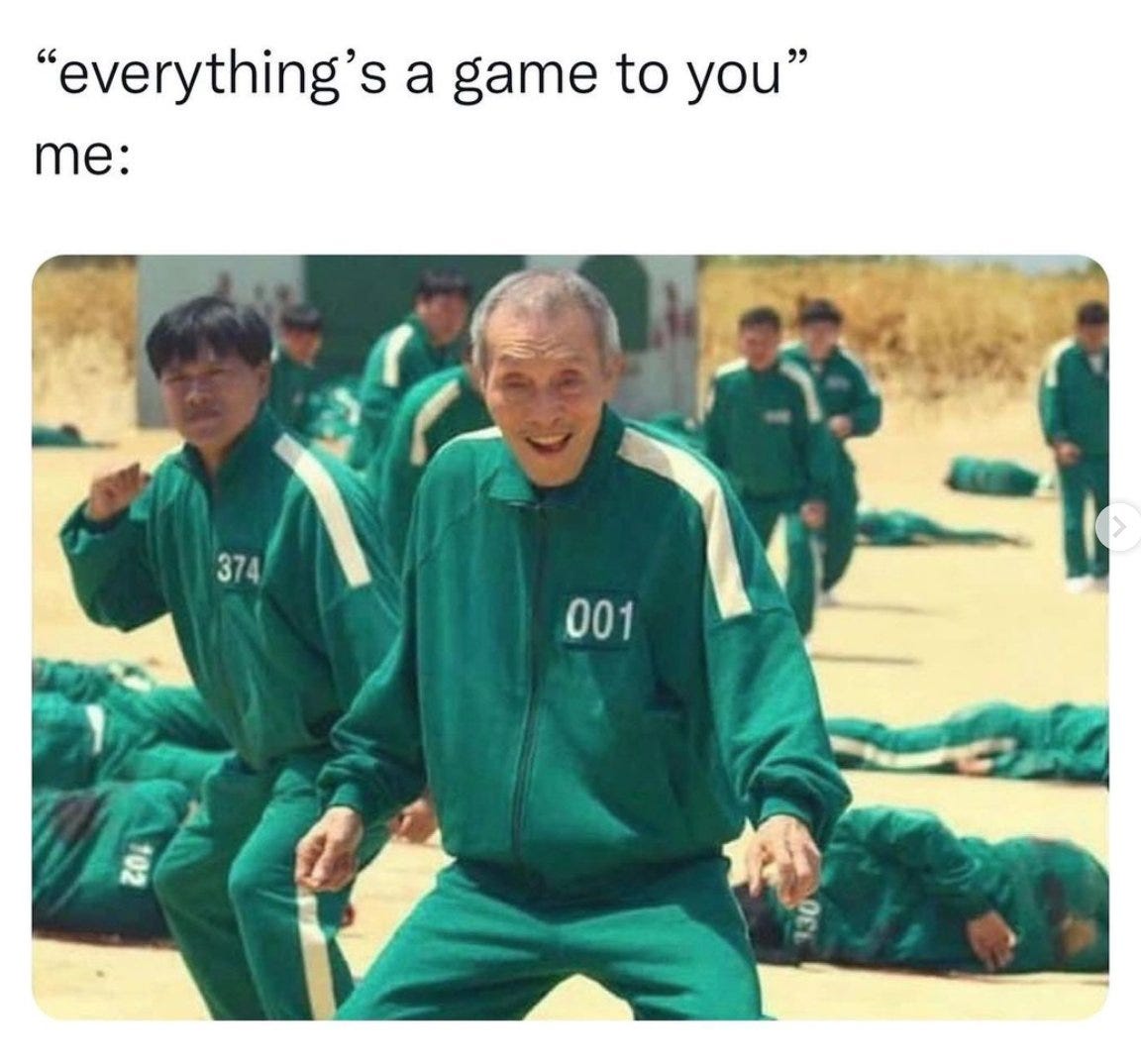Squid Game
How can you create an insanely popular series using Mechanism Design and Behavioural science?
*This post contains some spoilers from the Netflix show Squid Game*
Squid game is a very popular Korean series that is streaming now on Netflix. The show has broken all streaming records - it is now the most-streamed series in the history of Netflix.
Squid Game is about 456 people competing for a big cash prize by playing Korean childhood games. After the first shock of the first game ‘Red light, green light’, the participants discover that they get 100 million KRW (about 100k USD) every time a player dies.
Squid game is therefore a classical zero-sum game, i.e. your loss is an immediate win for me and vice versa. The only way to increase the pie is to let others die as their death equals more money for the living. As the director Hwang Dong-hyuk puts it, this is a story about losers.
For Hwang, the show's narrative reflects the "competitive society" we live in today. "This is a story about losers," he said -- those who struggle through the challenges of everyday life and get left behind, while the "winners level up."
Game-Theoretic Analysis
Even though the game is fundamentally a zero-sum game, to win the whole game, you need to win 6 sequential games. Some games require cooperation & forming alliances such as Tug-of-War, others require competition such as the final squid game. This creates a very interesting plot for the series as today’s friends are destined to become tomorrow’s enemies through the Game Design. Another interesting mechanism is how players can end the game any time - all they have to do is to organize a vote. If the majority decides to end the games, everybody can go back to their lives with no money. An important game-theoretic concept during the series is that game rules are law. When the organizers found a few guards colluding with a player, all involved have been killed and displayed to everybody else.
This is mechanism design doing what it’s supposed to do - by creating a rule set, making sure the rules are law, you are effectively creating a desired behavioural path for the players and the viewers. This desired behaviour of cooperation and competition implicitly lets the viewers connect and emphasize with the protagonists as they identify with them.
Behavioural science & Rationality
Even though the players are allowed to stop the games, by voting to stop - They did so once at the start - however later on as the money increased, no votes have taken place. Rationally, death equals an infinite loss for the player, they continue to play. It’s clear that the players are not acting rationally and that there are strong behavioural biases in play on top of the mechanism design rules.
The money “Piggy Bank” is a transparent vault and has been prominently displayed on top of the players - they can see live when it is increasing and how big it is. I suspect this creates a feeling of ownership for the survivors (endowment effect). They will effectively fight any chance to remove the probability of going home with nothing. They also feel that their life is perhaps worthless outside of the game, so the game gives them a purpose and a meaning. Their weak BATNA has been over-signalled and amplified by the organizers as they have only selected people with large debts. The organizers have even publicly stated this to one player that wanted to quit.
While the game goes on, more players die or are killed - the money increases in size and the winners feel an even more amplified loss aversion as losing here not only means death but also that the other players will benefit from the player’s death.
Summary
The creators of Squid Game combined excellent mechanism design techniques as well as nudges from behavioural science to create a series that went immediately viral and has broken all streaming records so far.
If you haven’t watched the series, I definitely recommend watching it! It’s thrilling, emotional, strategic & absolutely unpredictable.








Nice